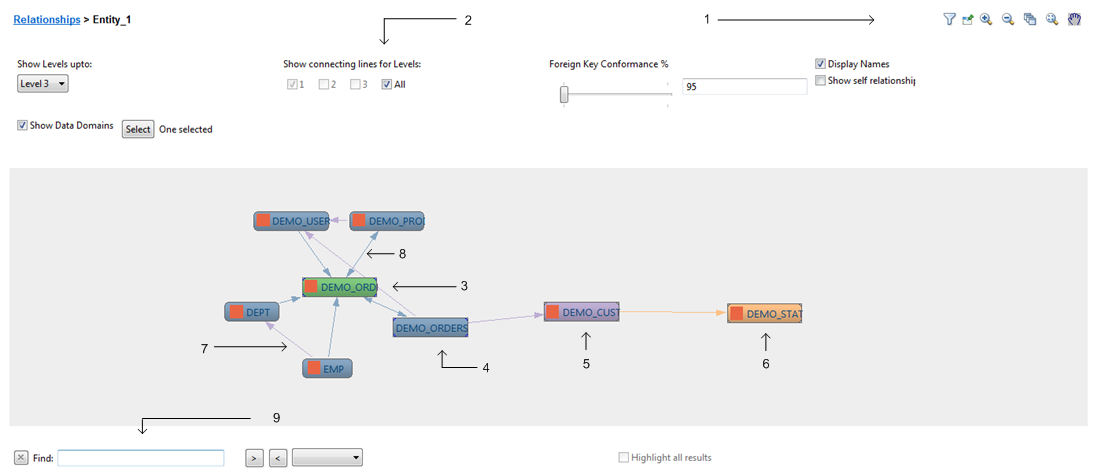Enterprise Discovery Results Overview
You can view the results of enterprise discovery in multiple views. The views are Relationships, Data Domains, Column Profile, Join Profile, and Overlap Discovery.
The Relationships view displays groups of data objects as circles. You can launch the foreign key profile results from this view. You can view the foreign key profile results in both graphical and tabular views. The Data Domains view displays data domain discovery results. The Column Profile view displays column profile results for each data object. The Join Profile view displays the number of parent orphan rows, child orphan rows, and rows included in the join. The Overlap Discovery view provides information about the participating columns and the overlapping percentage value.
Data objects can have multiple relationships between them. The graphical view of the foreign key results displays data object relationships that have the highest conformance percentage.
The following figure shows the graphical view of some sample data objects from the enterprise discovery results:
- 1. Toolbar icons that include filter, pin data object, zoom in, zoom out, arrange all, fit to window, and pan icons.
- 2. Filter options, such as display different levels of data object relationships, show connecting lines, and show self-related data objects.
- 3. The selected data object based on which the visual editor displays the rest of the relationships between data objects.
- 4. First level of data object relationships.
- 5. Second level of data object relationships.
- 6. Third level of data object relationships.
- 7. Connector between data objects. A single arrow head indicates a primary key to foreign key relationship between two data objects. The arrow head points to the data object with the primary key.
- 8. Connector between data objects. A double arrow head connector indicates a primary key to primary key relationship between two data objects. Mouse over the connector to view the join columns with maximum conformance for the inferred relationship.
- 9. Press CTRL+F to display the Find field and use an asterisk (*) as a wildcard character to find data objects in the graphical view.

